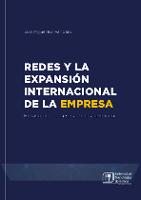Resumen
Multinational enterprises are constantly trying to expand into new markets either by exploiting its assets base or by gaining access to partner companies that own the required resources. Thus, MNEs face the compete-cooperate-coopete dilemma, which is often explained by conflicting approaches. Mainstream international business (IB) theory claims that own resources and transaction outcomes are generally sufficient to explain firms’ international expansion orientation, whereas network and social capital theories focus on the role of relationships and network embeddedness. Both perspectives seem to neglect that firms frequently develop both factors simultaneously. In this work, we bridge these perspectives by investigating the interplay between ownership, collaborative, and location advantages in producing the compete-cooperate-coopete decision. We use a biprobit model to analyze more than 50,000 new IB operations by 164 MNEs in a 5-year window. The results show the extent to which the competitive-collaborative contradictory forces attenuate each other as location advantages fluctuate. This contribution advances the resolution of the resource allocation dilemma by recognizing the conditions for selecting each expansion orientation: sole venture, cooperative and coopetitive.














